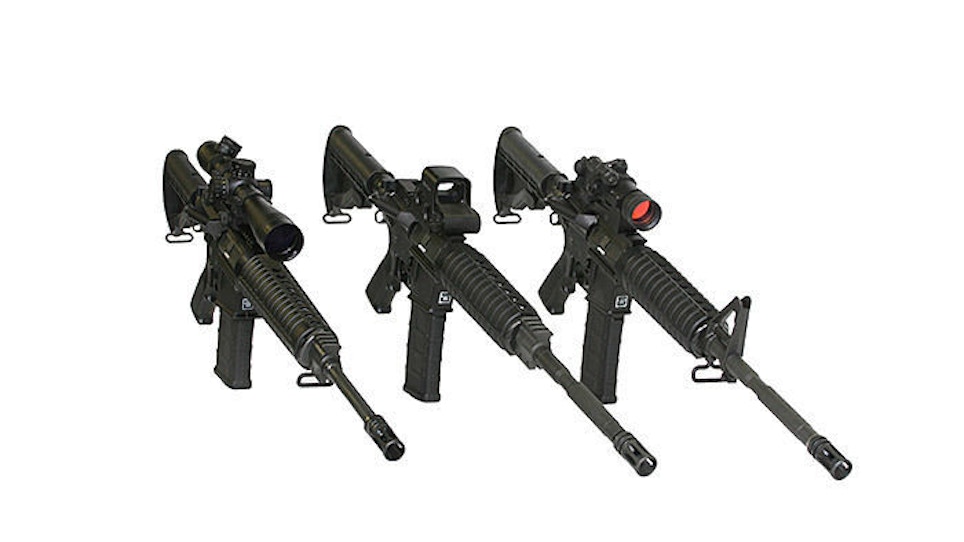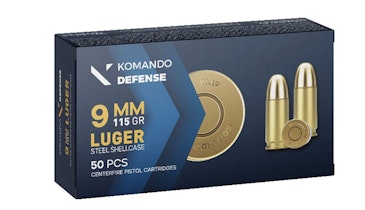In the retail industry we sometimes refer to the consumer disposable income as “percentage of wallet,” meaning you can only spend so much of your money before divorces happen or you simply run out of space. With most “gun people’s” safes and closets now fully stockpiled with AR-15s and polymer pistols, your regular consumers are now spending less than they did in the last eight politically torturous years.
My prediction is that 2015-2016 will be challenging for every tactical retailer unless they accept that reality and begin making some changes.
Though the 2016 elections are just around the corner, we are not yet in a panicked binge-buying mode like we were back in 2008. The drop in sales for 2014 indicated that consumers are beginning to “invest” their disposable income elsewhere instead of firearms. This year’s sales are not great either, however, for those AR-15 retailers willing to change with the times, we have some ideas.
Stop Selling Like It’s 2008
To illustrate the point that the market is changing, let’s pick on the No. 1 selling firearm in America, the “Black Rifle” AR-15. The historic explosion of new AR manufacturers began just prior to the 2008 election and has not stopped since. From only the year 2000, we shot from 29 or so AR manufacturers to an estimated 500 by 2015; a stunning 1,700 percent increase.
The problem for the industry is that for the first time since 2008, there are just too many people making AR-15s now and not enough people buying them.
Need an example? Right now a consumer can easily buy a blemished, stripped AR-15 lower receiver for about $40. But in 2000, clearance blemished receivers were typically still selling well over the $100 mark. That is a 60 percent price reduction in a market with an 1,700 percent increase in competitors.
In late 2014, top-shelf $2,500 AR-15 rifles begin slipping to $2,000 on the shelves to move excess retail and distributor inventory. This move pushed the $2,000 ARs to $1,500, and so forth until you get to the $600 AR-15s that end up selling in the $400 range.
There are several manufacturers who are now getting creative, offering dealer financing and incentive programs to move their inventory onto your showroom floor. Cambridge, Maryland-based LWRC, for example, is offering a free Aimpoint T1 optic with most rifle sales in hopes of moving its guns “across the counter.”
If these kind of market incentives continue, could gun dealers reach a point like car dealers where manufacturers cover the cost of inventory on the showroom floor until guns are sold? Perhaps.
With the observations that the “good old days” are over, retailers should put away the fishing nets they’ve been using to catch sales and switch to fishing poles with smarter marketing.
Big Ideas
The biggest question most black rifle retailers ask is what can they do now to start competing during an economic downturn. What works in every other industry is to make and keep a connection with your customers during the sale and after they leave your shop — all while finding new customers.
Very few non-chain gun shops do any advertising, and most rely solely on walk-in business or word of mouth. You don’t need to go nuts as a smaller firearm retailer. The one-man micro FFL dealer I use is always sending out group texts when he gets a deal on ammo.
Of course the big names in sporting goods are connecting with customers with emails, forums, competitive shooter sponsorships, events, content-based sales (“how-to” articles), and even old-fashioned direct mail. Consider picking a few new marketing ideas to get your name out more. If you are not working to get your existing customers to spend what money they do have in your store, then you are just paving the way for a hard economic time ahead.
Here are just a few ideas to help build a foundation in case the bottom really drops out.
Build a customer database — Creating even a simple customer marketing database in a spreadsheet delivers huge dividends and allows you to reach out to your customers when paired with an inexpensive “Constant Contact” business marketing email account. If you are not capturing emails from customers and reaching out at least once a month with a “sale/what’s new” flyer via email, then you are losing customers and money. If you can get customers in your shop, you will generally sell other things. Give customers an excuse to come in with special loss leader offers, ammo deals and special product introduction pre-orders. Selling 50 AR-15 red-dot sights at cost will get customers in the door and get the register ringing. But be cautious. No one in the gun industry needs to send out daily emails — no one. Once or twice a month is more than enough to keep in contact with your customer and keep them buying without annoying them.
Target female shooters — The female segment of buyers is growing fast in all areas of hunting, tactical and competition — but not at the pace that covers the gap left by the drop off of male-driven sales. Clean up and warm up the feel of your store. If you don’t understand what that means, ask a trusted female advisor. Partner with CCW trainers and local 3-gun teams to help more women in your community get into guns. There are two distinct types of female shooters — those who buy pink guns and those who are annoyed by them. Stock for both types. The National Shooting Sports Foundation argues that women are the most significant sale opportunity firearms retailers have this year. Hire a few local female 3-gun shooters you are sponsoring as part-time sales help just to have more female in-store sale presence when women do come in. Yes, this does make a huge difference to woman. A guy will literally drop his pants in the middle of a store to try on a new holster — women will not. Consider adding a small changing area with a mirror where a woman can try out a couple holster options, accessories or clothing privately.
Offer low-cost FFL transfers — If you can get the customer in the store for any reason, they will likely buy something else. During the transfer you see the competitive pricing of that gun sale you just lost to some guy on a gun auction site. Most dealers who charge around $15 for a transfer understand that getting a customer in the door is easier when your fees are lower.
Apply for your Class III/SOT FFL license — All indications are that 2013 was the beginning of a huge short-barreled rifle and suppressor purchase boom that has yet to slow. I currently have four suppressor tax stamps applied for, and I know that the ATF is gearing up for a huge year of paperwork. The more common these NFA items become, the more likely political minds will be changed about the restrictions. How about higher margins and sales? Suppressors and SBRs are typically sold at much higher margins than all the other black rifles on your shelf. More and more regular firearms dealers are adding a Class 3 license to take advantage of this high-dollar and high-margin market, are you?
Accessorize
Accessorizing and AR-15 building will likely be hot this year again. Almost everyone who was dead set on buying an AR has already done it, but now they need all those great little upgrades with better optics, triggers, LEBPs (little expensive billet pieces), furniture and tools which ultimately add up to more than the gun. In most cases accessories deliver higher margins for the retailer.
Consider stocking a few HyperFire, Timney or CMC trigger kits, action rods and action blocks for AR builders. My very small one-man local gun dealer always seems to have one of everything on the shelf, plenty of AR-15 tools, a deep AR-15 parts bin and an open bench for customers to do gun work. When I need an AR-15 hammer spring or one pin, he just pulls out an ACE Hardware-style plastic organizer and sells me just the one or two parts I need at very a tidy margin. Sure it’s tough to make a profit on a $3 trigger pin and $30 stripped blemished lower, but even if you have one for sale at $40, the customer is saving a transfer fee and you are keeping him in the store buying all the other full-margin parts he needs. If a builder runs into problems, offer gunsmithing services or at least have a recommended shop that can thread that barrel for a new suppressor you just sold them.
Lastly, if you have old stock that has been sitting around too long, consider using one of the popular online gun auction sites to liquidate old inventory. Who cares if you just broke even — at least you can invest those dollars in something that will sell.
The Bright Light
If you, the retailer, do things right, you can take money from the pockets of competitors with great customer service, timely relevant marketing, upgrade accessories for the guns they own and are building, and expanded services.
Although the next two years will be tough for the AR-15 market and the tactical retailer with loads of new online players, a little planning ahead can help keep your local customers happy and your register singing.






